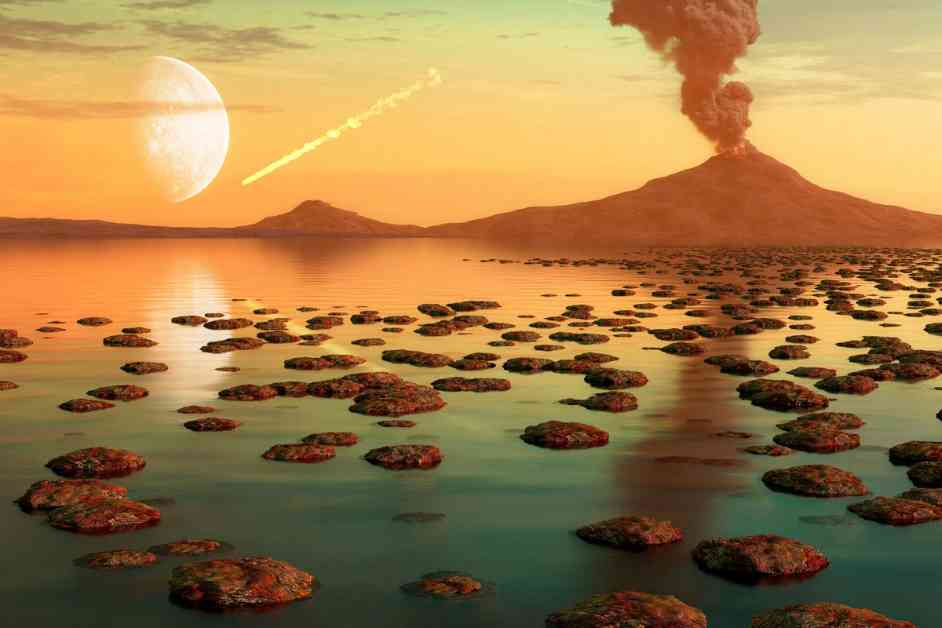Sixty-six million years ago, a catastrophic asteroid impact changed the course of Earth’s history. The impact, which occurred in what is now the Yucatán Peninsula in Mexico, wiped out 75 percent of species on Earth, including the dinosaurs. However, from the ashes of this devastation, our mammalian ancestors emerged, ushering in a new era in Earth’s timeline.
Recent research has shed light on an even more significant asteroid impact that took place 3.26 billion years ago during the Archean eon. This impact, known as the S2 impact, was 50 to 200 times larger than the asteroid that killed the dinosaurs. Despite the devastation it caused, including massive tsunamis and boiling away the ocean’s upper layer, the S2 impact also had a positive side effect. It introduced essential nutrients like phosphorus into the nutrient-starved seas, leading to a bloom of life.
The findings of this research, conducted by geologist Nadja Drabon and her team, challenge the previous understanding of how early life on Earth was impacted by such catastrophic events. The study, published in the Proceedings of the National Academy of Sciences USA, suggests that giant impacts like the S2 impact had a more significant influence on Earth’s early biosphere than previously thought.
Before these catastrophic impacts, Earth looked vastly different than it does today. It was mostly covered in water, with only a few volcanic islands breaking the ocean’s surface. The lack of large continents meant that critical nutrients like phosphorus were scarce in the oceans. Additionally, the atmosphere and oceans had very little oxygen, and life on Earth consisted primarily of single-celled microbes.
The research conducted by Drabon and her team provides insights into how early life on Earth responded to extreme events like asteroid impacts. By analyzing rock layers in South Africa, the researchers were able to uncover evidence of how life rebounded after the S2 impact. The influx of nutrients and the rapid growth of microbial communities following the impact highlight the resilience of early life forms on Earth.
These findings have broader implications for our understanding of how life on Earth has evolved in response to catastrophic events. The ability of early microbes to bounce back from such devastating impacts underscores the resilience of life in the face of adversity. It also raises questions about how more complex life forms, like plants and animals, would fare in similar catastrophic scenarios.
Overall, the research by Drabon and her team opens up new avenues for exploring the interplay between asteroid impacts and the evolution of life on Earth. By studying these ancient events, scientists can gain valuable insights into how life on our planet has adapted and thrived in the face of extreme challenges.










